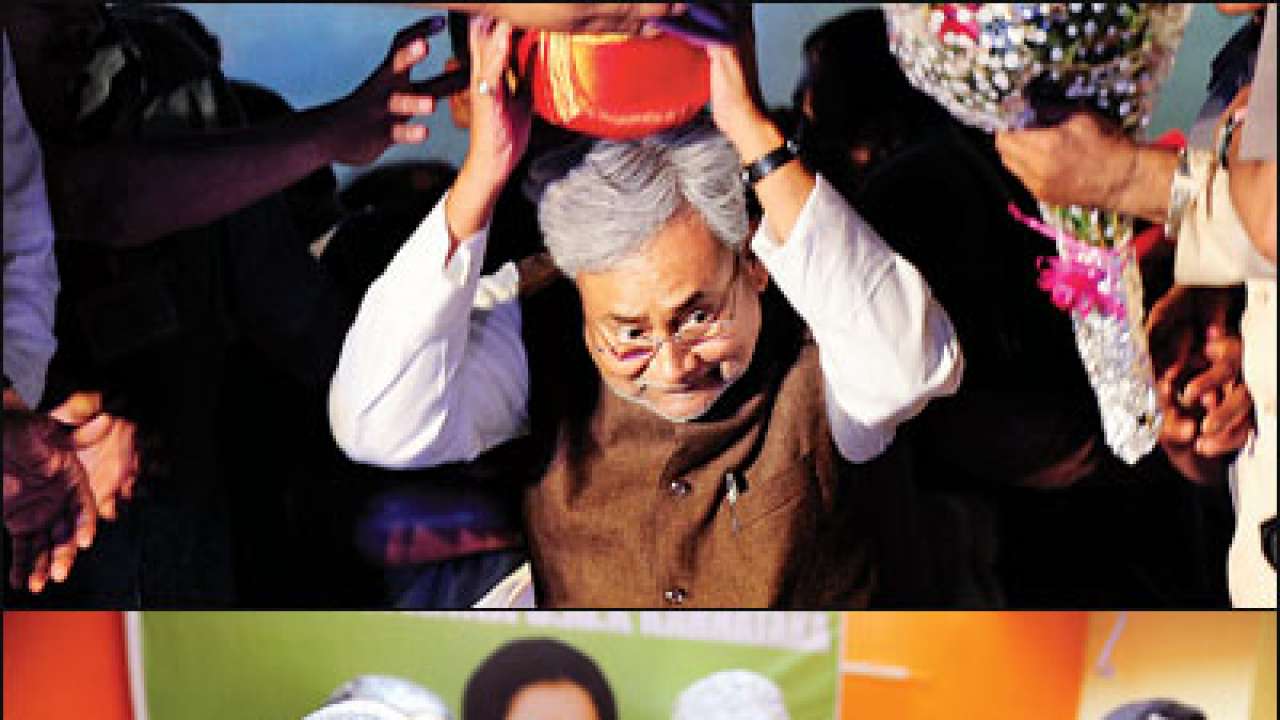
Love it or loathe it, the Gujarat model of development under the leadership of Narendra Modi is setting the terms of the debates around the upcoming elections. To his supporters, a mandate for Modi will unleash the magic forces of Modinomics, his unique style of economic governance at the Centre, and breathe life into the country’s stagnant economy. To his detractors, Gujarat’s growth story under him is a hyped up PR campaign, aimed at covering up a dark underbelly of poverty, inequality, and low levels of human development indicators.
What are the facts? Of course, there are many dimensions of economic performance. Which index we choose to emphasize reflects either our preferences as to the aspect of economic performance we value the most, or our views as to which dimension has to be improved (say, per capita income) for bettering the dimension we care about (say, poverty alleviation).
Let us first take the most obvious indicator, per capita income level. Over the last three decades, Gujarat’s rank has hovered around fourth, behind Punjab, Haryana and Maharashtra. And while Gujarat’s rank improved to third position in the 2000s, so did Maharashtra’s, from third to first. More interestingly, the rise of both states was matched by a fall in Punjab’s rank to seven.
Now, let’s turn to the growth rate of per capita income, supposedly a strong point of Modi’s economic score card. A lot of people are arguing that Gujarat has grown faster than rest of India during the 2000s, and present this as clinching evidence for the power of Modi’s economic model.
There are two problems with this argument. First, there are other states that have done the same. Gujarat, Maharashtra and Haryana have been going neck and neck at the top of the growth rate rankings over the last three decades. Yet, no one is talking about the Maharashtra model or the Haryana model of development. Singling out Gujarat for praise, while ignoring the rest of the leading contenders, seems disingenuous.
Second, Gujarat’s growth rate was higher than the all-India level in the 1980s and 1990s as well. To establish the claim that Modi had a transformative impact on Gujarat’s growth trajectory, we have to show that the difference between Gujarat’s growth rate and that of the rest of India, actually increased under Modi’s rule, and more so compared to other states.
Gujarat’s growth rate in the 1990s was 4.8 per cent compared to the national average of 3.7 per cent. In the 2000s, it was 6.9 per cent compared to the national average of 5.6 per cent. Thus, the difference between Gujarat’s growth rate and the national average increased only marginally, from 1.1 percentage points to 1.3 percentage points. A good performance? Yes. Justifying the hype? No, if we compare the performance of other states.
Maharashtra, the richest state in the 2000s, also improved its growth rate from 4.5 per cent in the 1990s to 6.7 per cent in the 2000s. Maharashtra’s growth is really driven by Mumbai and so it is not a fair comparison! Well, several other states in the club of highest growing states in the 2000s such as Haryana, Andhra Pradesh, Tamil Nadu all increased their growth rates compared to the 1990s by bigger margins. Bihar, the state that has been at the bottom of the income level rankings all through, was growing at 1 per cent in the 1990s but shot to 6.9 per cent in 2000s. This means that, compared to the national average, Bihar’s growth rate was 2.7 percentage points lower in the 1990s, but became 1.3 percentage points higher in the 2000s. So the prize for the most dramatic turnaround would go to Bihar! One could argue that it is easier to turn around a laggard state like Bihar than to maintain, or to marginally improve, the performance of a leading state, like Maharashtra, Haryana or Gujarat. After all, there is greater scope for improvement in the former case. Conversely, one could also argue that it is more challenging to turn around a backward and a more populous state, because if it were easy, someone would have done it already.
Thus, Gujarat did not show any signs of accelerating any faster in 2000s than before, and nor was it the only one at the top of the league. So how does this reconcile with the assessment of other economists, such as Arvind Panagariya? The explanation lies in the method of comparison chosen. Gujarat did have one of the highest growth rates under Modi. Also, it is true that in the past Gujarat’s growth rate was not always above the national average. But its take off started in the 1990s, due to liberalization, and it was already improving at a rate higher than the rest of the country before Modi took over. Its growth rate did not significantly accelerate under Modi.
What about other socio-economic indicators? For Human Development Index (HDI), Kerala has been the star performer by a distance. While Gujarat’s HDI performance was above the national average in the 1980s and 1990s, it actually worsened in the 2000s and came down to the national average. In terms of levels of inequality, Gujarat was below the national average in the 1980s-90s, but this trend got reversed in the 2000s. However, Gujarat’s performance in poverty reduction over the last three decades pales in comparison to that of Tamil Nadu, the leader in this regard.
So while Gujarat’s overall economic record is undoubtedly good all through the last three decades compared to other states, its performance in the 2000s does not seem to justify the wild euphoria and exuberant optimism about Modi’s economic leadership. The Gujarat story has dominated the media, but there are also the Bihar story, the Tamil Nadu story, and of course, the Maharashtra and Kerala stories.
Ghatak is Professor of Economics, London School of Economics; Roy is a Post Doctoral Fellow, University of Warwick